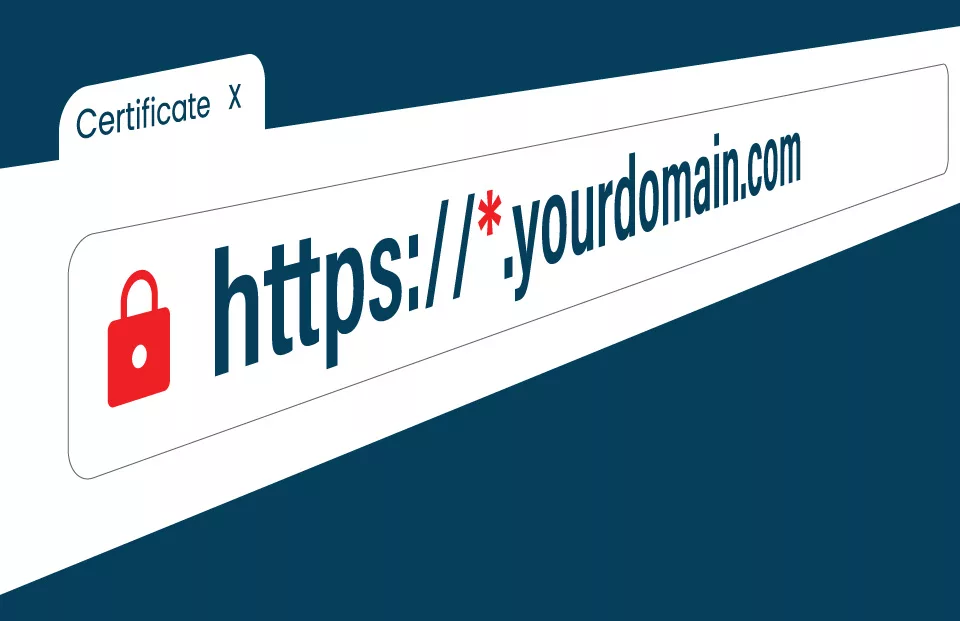Cybersecurity is paramount in today’s digital landscape, especially for websites and online platforms that handle sensitive information. One of the essential tools in ensuring a secure online environment is the wildcard certificate. This article explores the concept of wildcard certificates, their functionality, benefits, use cases, and best practices for implementation.
Introduction to Wildcard Certificates
Wildcard certificates are a type of SSL/TLS certificate designed to secure a domain and all its subdomains. They use a wildcard character (*) to represent any subdomain under a specified domain, allowing for comprehensive security coverage without the need to obtain individual certificates for each subdomain.
How Wildcard Certificates Work
When a wildcard certificate is issued for a domain (e.g., example.com), it can secure multiple subdomains (e.g., blog.example.com, shop.example.com, mail.example.com) by substituting the wildcard character for any subdomain name.
Domain Substitution
The wildcard character (*) in a certificate’s Common Name field allows for dynamic substitution, enabling secure connections for various subdomains.
Secure Multiple Subdomains
With a wildcard certificate, all subdomains under the specified domain can be secured using a single certificate, simplifying the SSL/TLS deployment process.
Benefits of Wildcard Certificates
Cost-Effective
Wildcard certificates offer cost savings as they eliminate the need to purchase and manage separate certificates for each subdomain.
Simplified Management
Managing a single wildcard certificate for all subdomains is more efficient than handling multiple certificates individually.
Enhanced Security
Wildcard certificates ensure consistent encryption and authentication across all subdomains, enhancing overall security posture.
Types of Wildcard Certificates
There are two main types of wildcard certificates:
- Single-Level Wildcards: Secure all immediate subdomains of a specified domain.
- Multi-Level Wildcards: Secure subdomains at multiple levels, such as *.example.com and *.sub.example.com.
Common Use Cases for Wildcard Certificates
Wildcard certificates find extensive use in various scenarios, including:
- E-commerce Platforms: Securing multiple store subdomains (e.g., shop1.example.com, shop2.example.com).
- Blogging Networks: Protecting individual blogs under a main domain (e.g., blog1.example.com, blog2.example.com).
- Corporate Websites: Ensuring secure communication across departments and services (e.g., hr.example.com, mail.example.com).
How to Obtain a Wildcard Certificate
Wildcard certificates can be obtained from reputable Certificate Authorities (CAs) through a validation process that verifies domain ownership and control.
Certificate Authorities
Leading CAs such as Let’s Encrypt, DigiCert, and Sectigo offer wildcard certificates with varying features and validation requirements.
Validation Process
The validation process typically involves domain verification through email, DNS records, or HTTP file uploads to prove ownership and authorize certificate issuance.
Best Practices for Using Wildcard Certificates
To maximize the benefits of wildcard certificates, adhere to these best practices:
- Regular Updates: Keep wildcard certificates updated to maintain security standards and patch vulnerabilities.
- Proper Key Management: Safeguard private keys and follow key rotation procedures to prevent unauthorized access.
Challenges and Limitations of Wildcard Certificates
While wildcard certificates offer significant advantages, they also present challenges such as:
- Security Risks: Misconfiguration or compromise of wildcard certificates can lead to widespread security breaches.
- Compatibility Issues: Some older systems or applications may not fully support wildcard certificates, requiring additional configuration.
Also Read more at WellHealthOrganic Buffalo Milk Tag
Conclusion
Wildcard certificates are invaluable tools for securing websites and online platforms with multiple subdomains. By understanding how wildcard certificates work, their benefits, and best practices for implementation, organizations can enhance their cybersecurity posture and ensure a safe online experience for users.




